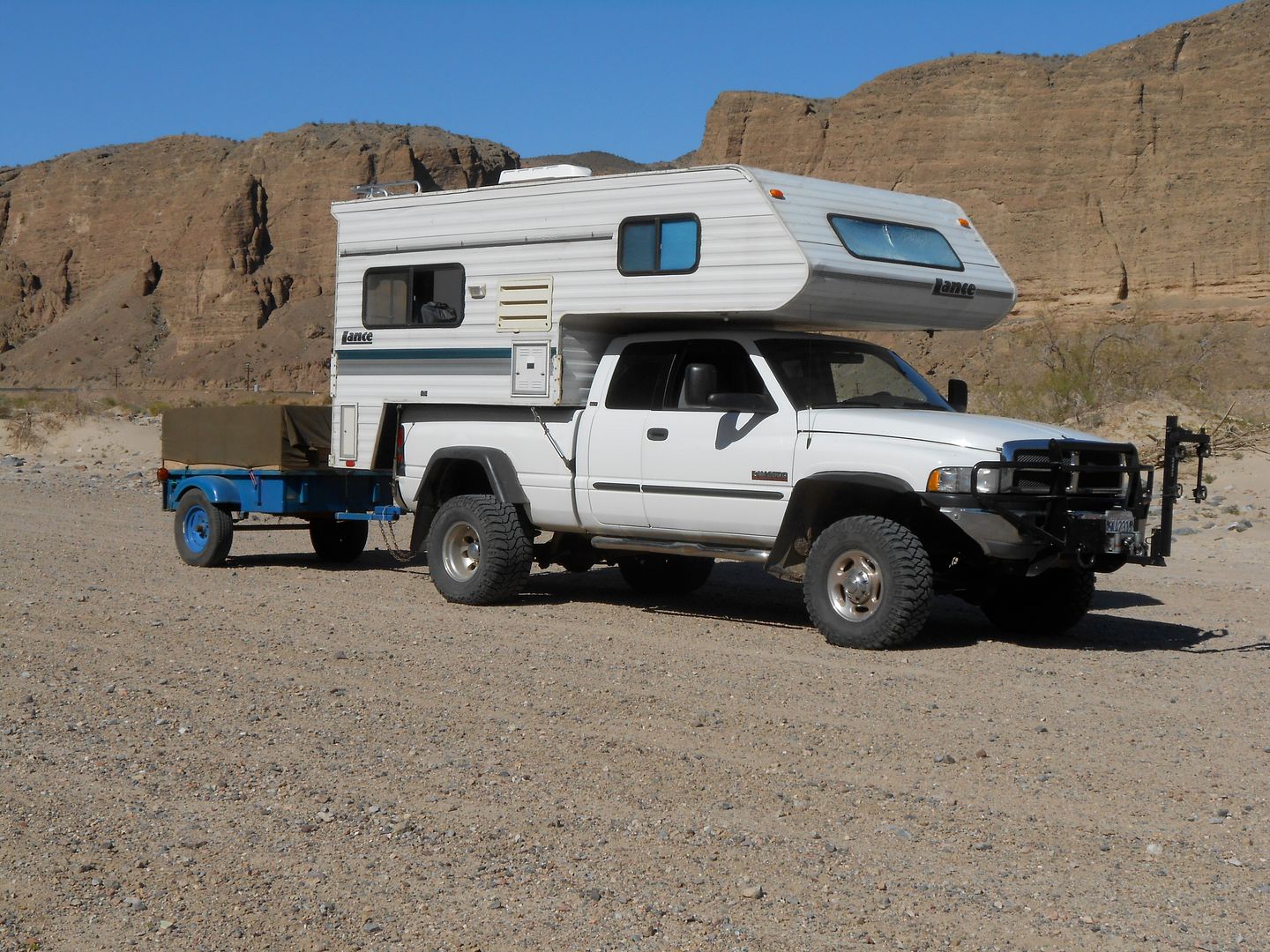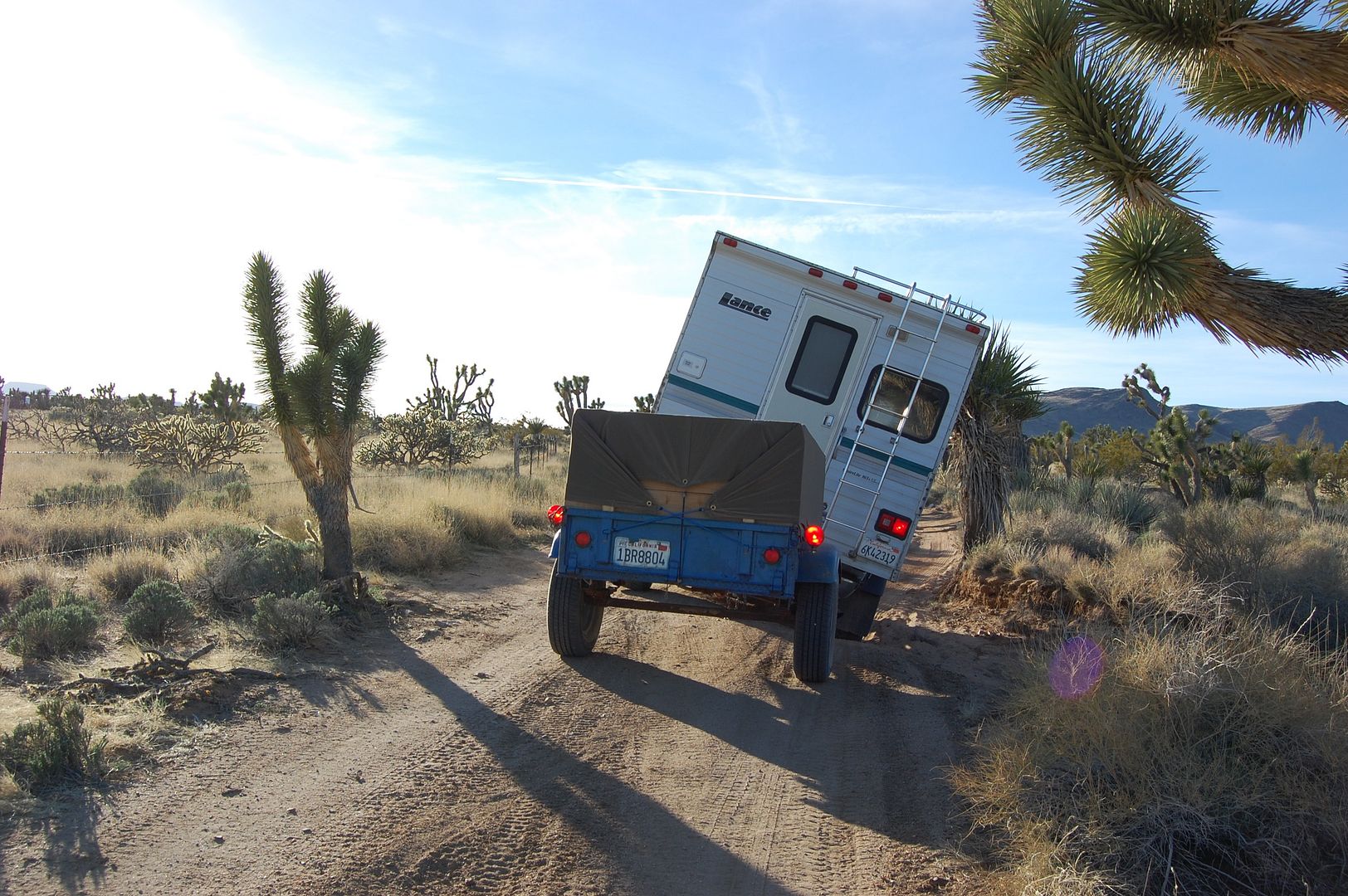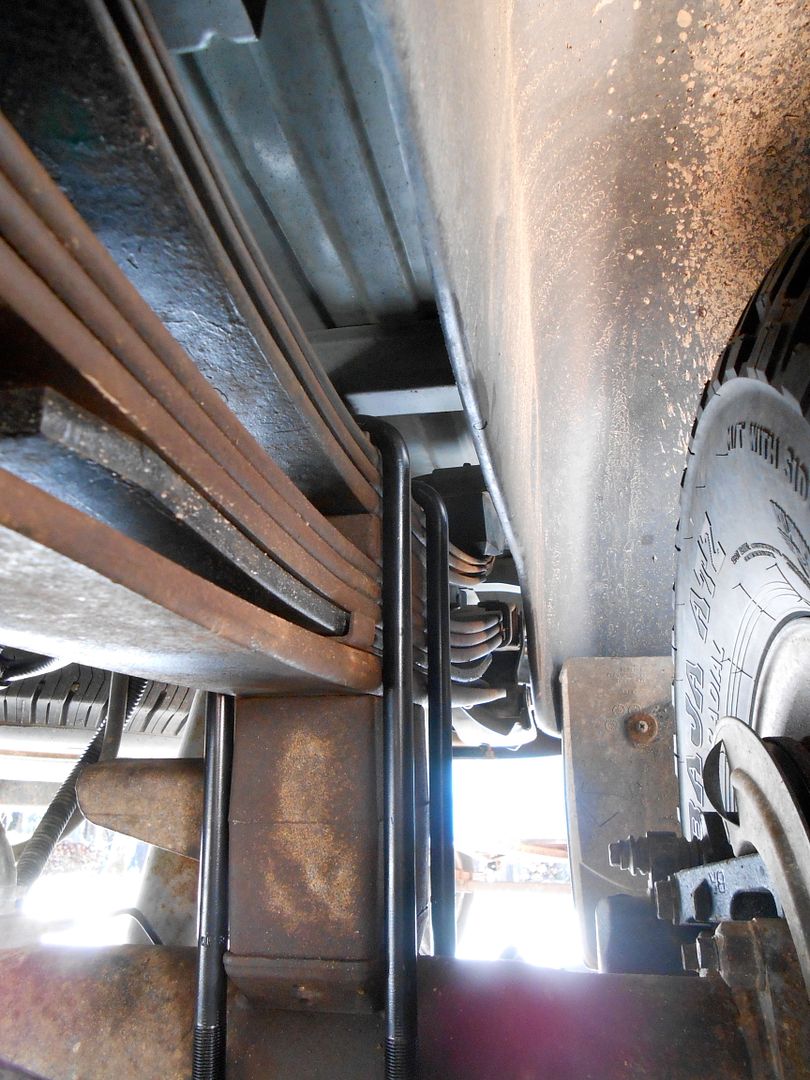This has been a good discussion. Everyone on here has a differing idea of how much water they actually need for say, 5 to 7 days without umbilicals.
As an XTC'er, with a small, hardside truck camper, I have a minimalist water setup that is expandable according to need.
The Lance Lite 165-s comes with an 18 gallon fresh water tank. I know that sounds pitifully small, but remember, you have to carry this stuff, and @ 8.3 pounds per gallon that adds up quickly. I'm in the same, but smaller yet camp as is Bryan (BKA).
6-one gallon, H.D. Nalgene drinking/cooking water jugs, inside a low down cabinet on the floor of the TC.
24, or more 16 oz. commercial waters stored behind the little doors that open ahead of the wheel wells of the pickup.
To this basic water carry, I can add 4-2-1/2 gallon low slung plastic water jugs.
If more water is needed, I must pull Little Blue Bradley along with up to 4, 5 gallon, low slung plastic 'jerry cans' for water.
For a really remote water carry, I have a 30 gallon ex-pickle plastic barrel that would have to go in the jeep trailer too. Why? Weight. The measly 30 gallons weighs 250 pounds! Plus the barrel.There is no way anyone with arthritis could pick this up. It takes two very burley boys to even move this thing. A small, driver driven pinion plastic water pump is good enough for transfer. Notice I made most of the add-on water supply in small containers. Why? With the bouncing and shock loading these containers get on say, the Mojave Road there is less weight in the container to shock load or split the container. Also, the cyclists filled their camel backs via the little rear most fresh water spigot on the TC, so was refilling the main water tank with those easy to lift 2.5. gallon cans every day. Here is little Blue Bradley55 and TC on the Mojave Road with 20 extra gallons of water in the trailer. As i was one of the SAG wagons for this trip, It was enough water for seven people ( 3 on bicycles, 2 on motorcycles, 2 driving hard side truck campers) for the 3 day, 146 mile two-track traverse. But, just enough. It is hard to believe the bike people drank that much water, about 3 gallons a day on the trail, constantly refilling their camelbacks.


So, keep the containers small if you do any off-road stuff or have any physical frailty. Carry only what you think you will need plus a little more, but not the max all the time.
regards, as always, jefe


